![Blake, Ran / Dave Knife Fabris: Live Amsterdam 2006, First Visit [CD + POSTCARDS] (ezz-thetics by Hat Hut Records Ltd) Blake, Ran / Dave Knife Fabris: Live Amsterdam 2006, First Visit [CD + POSTCARDS] (ezz-thetics by Hat Hut Records Ltd)](https://www.teuthida.com/productImages/misc4/35275.jpg)
Ran Blake presents eleven solo performances at Amsterdam's Bimhuis, interpreting a captivating selection of tunes, including works by Duke Ellington and Abbey Lincoln; followed by eight duos with electric guitarist David 'Knife' Fabris, continuing their collaborative legacy from albums such as Horace is Blue and Something to Live For, along with their releases on Soul Note and NoBusiness.
In Stock
Quantity in Basket: None
Log In to use our Wish List
Shipping Weight: 3.00 units
Sample The Album:
Ran Blake-piano
David Fabris-electric guitar
Click an artist name above to see in-stock items for that artist.
Includes two postcards with a black & white image of Ran Blake.
UPC: 752156710721
Label: ezz-thetics by Hat Hut Records Ltd
Catalog ID: ezz-thetics 107
Squidco Product Code: 35275
Format: CD
Condition: New
Released: 2024
Country: Switzerland
Packaging: Cardboard Gatefold
Recorded at Bimhuis, in Amsterdam, The Netherlands, April 21st, 2006.
"A confession: it's taken me a long time to catch a connection between the respective piano characteristics of Ran Blake and Claude Debussy (the Images, perhaps, for one example), and while one might initially be tempted to cite the shared delicacy, and variety, of touch (albeit one spontaneous and the other composed) that results in an expansive Impressionistic palette of colors - tone and timbre - blurred and blended into wistful and suggestive possibilities of harmonic ambiance, I've recently suspected there's another similarity that compels the dramatic substance of their individual musical visions, that is, of poetry, in the broadest of its definitions, as a creative state of mind that reveals "a concentrated imaginative awareness of experience... through meaning, sound, and rhythm" as well as "a quality of spontaneity and grace" (Webster's New Collegiate Dictionary), or, as American Zen/Beat poet Philip Whalen described his own work, "the pictures or graph of a mind moving" (from "Since You Ask Me," a brief 1959 prose "press release").
But the point here is not really Debussy, rather, it has to do with the commitment to creativity as a reflection of inseparable emotional/intellectual/imaginative inspiration, and a personal vision - a clarity of intent and courage of expression. Some years ago I wrote of the relationship I understood between Blake's music and Emily Dickinson's 19th century poetry, using her concise, often enigmatic words to explore the "ecstatic instant" that does not neglect anguish, and which "distills amazing sense / from ordinary meanings" in his interpretation of familiar songs, through which we experience him not as a conventional soloist but a restructuralist, in mind and method. If, this time, I add Philip Whalen's 20th century poetry to the discussion, it is my reponse to the nature of the music from this Bimhuis performance, fortunately recorded and released here for the first time.
The relevant elements that make Whalen's verse so distinctive have also to do with mind and method. Consider the parallels. His near-ecstatic joy - as well as frustration, wit, melancholy, and ultimately Buddhist acceptance - in the observation, appreciation, and discovery of the ordinary details of our daily existence finds expression in exacting, unpredictable language arranged in what appears to be stream-of-consciousness moments of revelation while shrewdly, yet unselfconsciously, chronicling fantastic leaps of mind - segues, juxtapositions, interruptions, non sequiturs, asides, ellipses - that determine the form of the poetry as an improvisational idea/energy construct akin to (according to Whalen) "a continuous fabric (nerve movie?)" in order to "trip the synapse...of reader's brain causing great sections of his nervous system - distant galaxies hitherto unsuspected ... - to light up" (from the preface to his book Every Day).
Thus it's possible to hear something similar, the "pictures or graph of a mind moving" in the mercurial mental storyboard plots of Blake's music. It is, I trust, the same impetus that prompts Whalen in his "Birthday Poem" to say "Nothing's genuine except imagination," and later suddenly insert without warning or any previous reference or explanation a list of 1930s and '40s actors including Monty Woolley, George Sanders, and Ethel Barrymore - just as Ran is liable to insinuate a hint of Vertigo or the aura of Laura into an otherwise seemingly unrelated tune by Gershwin or Al Green. The shock of recognition engages our own critical processes, and illuminates the recesses of memory.
This same revelatory fluidity of form and detail, along with the breadth and personal symbolism of his repertoire, explains why Blake has had few, but special, collaborators throughout his career - and none has contributed so long or so well as Dave "Knife" Fabris. In this unique sound world, the guitarist's role requires a conceptual telepathy and chameleonic skills; he provides parallel melodies, assumes a voice in dialogue, injects commentary, alternately supports or upsets the mood, offers understated nuances and firecracker bursts of color. And his deft, eerie arrangement of Bernard Herrmann's theme from North By Northwest is edgy and ominous, evoking the spirit of Hitchcock.
To experience this music, over the relocations of time and place, is an opportunity to confront complex truths and seductive mysteries, discover the poetry in sound, and share a rare "ecstatic instant." "-Art Lange, Chicago, April 2024
Includes two postcards with a black & white image of Ran Blake.
Artist Biographies
• Show Bio for Ran Blake "Ran Blake (b. 20 April 1935, Springfield, MA) In a career that now spans five decades, pianist Ran Blake has created a unique niche in improvised music as an artist and educator. With a characteristic mix of spontaneous solos, modern classical tonalities, the great American blues and gospel traditions, and themes from classic Film Noir, Blake's singular sound has earned a dedicated following all over the world. His dual musical legacy includes more than 40 albums on some of the world's finest jazz labels, as well nearly 40 years as a groundbreaking educator at Boston's New England Conservatory. Blake first discovered the dark, image laden and complex character driven films that would so influence his music at age 12 when he first saw Robert Siodmak's Spiral Staircase. "There were post World War II musical nuances that if occasionally banal and as clichéd as yesterday's soap operas, were often so eerie, haunting and unforgettable," Blake would later write. "After more than eighteen viewings during a period of twenty days, plots, scenes, and melodic and harmonic surfaces intermingled, obtruding into my day life as well as my dreams." Long before the invention of virtual reality, Blake began mentally placing himself inside the films and real life scenarios that inspired his original compositions like "Spiral Staircase", "Memphis" and "The Short Life of Barbara Monk". The influence of the Pentecostal church music he also discovered growing up in Suffield, Connecticut, combined with his musical immersion in what he terms "a Film Noir world," laid the groundwork for his earliest musical style. That early style would become codified when he and fellow Bard College student and vocalist Jeanne Lee became a duo in the late 1950's. Their partnership would create the landmark cult favorite The Newest Sound Around (RCA) in 1962, introducing the world to both their unique talents and their revolutionary approach to jazz standards. This debut recording would also show the advancing synthesis of Blake's diverse influences with its haunting version of David Raksin's title track from the movie Laura and his original tribute to his first experience with gospel music, "The Church on Russell Street". The Newest Sound Around was initiated and informally supervised by the man that would be come Blake's most significant mentor and champion, Gunther Schuller. The two began their forty-year friendship at a chance meeting at Atlantic Records' New York studio in January 1959. Less than two years earlier, Schuller coined the term "Third Stream" at a lecture at Brandeis University. Schuller was recording on Atlantic-helping to define his term in musical practice-with future jazz giants like John Lewis, Bill Evans, Eric Dolphy, and Ornette Coleman. Ran Blake came to the label to accept what he calls "a low level position" that allowed him to be near the music of inspirations like Chris Connor, Ray Charles, and Harlem's famous Apollo Theater. Blake's long association with Schuller, modern classical music, and Schuller's controversial term began here, and was forged by years of friendship, collaboration and innovation. One of the only people in the music world who could see the potential of Blake's unorthodox sounding musical style, Schuller invited Blake to study at the Lenox School of Jazz in the summers of 1959 and 1960. While in Lenox, also home to the classical music mecca at Tanglewood in western Massachusetts, Blake studied with the jazz giants who formed the faculty of this one-of-a-kind institution-Lewis, Oscar Peterson, Bill Russo, and many others-and began formulating his style in earnest. He also studied in New York with piano legends Mary Lou Williams and Mal Waldron. A year after Schuller became president of Boston's New England Conservatory in 1967, Blake joined his mentor and many one-time teachers and inspirations, including George Russell, as a faculty member at NEC, the first American conservatory to offer a jazz degree. In 1973, Blake became the first Chair of the Third Stream Department, which he co-founded with Schuller at the school. He still holds this position-though the department was recently renamed the Contemporary Improvisation Department to address both its expansion from Blake's own additions and the outdatedness of the term. Blake's teaching approach emphasizes what he calls "the primacy of the ear," as he believes music is traditionally taught by the wrong sense. His innovative ear and style development process elevates the listening process to the same status as the written score. This approach compliments the stylistic synthesis of the original Third Stream concept, while also providing an open, broad based learning environment that promotes the development of innovation and individuality. Musicians of note Don Byron, Matthew Shipp, and John Medeski have studied with Blake at NEC.Although Blake's teaching career would soon become the second half of his dual musical legacy, his career as an influential performer and wholly individual jazz artist is his main source of fame. Following Jeanne Lee's departure to become one of the premier vocalists in the burgeoning avant-garde, Blake recorded the prototypical Ran Blake Plays Solo Piano (ESP) in 1965. The recording showed a clear refinement of Blake's style of reinventing popular standards by incorporating his other influences from Film Noir, gospel, his favorite pianist Thelonious Monk, and composers like Stravinsky, Prokofiev, and Messaien. His reputation as the major Third Stream pianist, and later an educator, soon followed, as he could improvise just as easily on a jazz chord progression as a twelve-tone row. From 1965 on, Blake worked primarily as a solo pianist on more than 30 albums. Although most of the music was primarily informed by his Film Noir perspective, many of his most acclaimed recordings are tributes to artists like Monk, Sarah Vaughn, Horace Silver, George Gershwin, and Duke Ellington. These tributes merged with his teaching career by inspiring an annual summer course he still teaches at NEC, thoroughly exploring the music of a single artist. He has also recorded with Jaki Byard, Anthony Braxton, Steve Lacy, Houston Person, Enrico Rava, Clifford Jordan, Ricky Ford, Christine Correa, David "Knife" Fabris, and others, including a 1989 reunion with Jeanne Lee.Most recently, Blake reinvented himself again for a new millennium of fans. Although solo albums like Film Noir (Arista/Novus) and Duke Dreams (Soul Note) earned five star ratings in publications like Down Beat and the All Music Guide to Jazz, 2001's Sonic Temples (GM Recordings) is Blake's best received and most critically acclaimed recording in several years. The recording features Schuller's two jazz musician sons, Ed (bass) and George (drums), whom Blake has known their entire lives and worked with throughout the last 25 years. This is his first recording in the standard piano trio format, an unprecedented statistic for a jazz pianist of his stature. This collaboration, which Gunther Schuller conceived and produced as a testament to the unheard breadth of Blake's abilities, showcases Blake performing with a rhythm section and features a repertoire of up tempo standards and group improvisations, as well as trademark Blake originals. 2012 marked Blake's fifty years as a professional recording artist, making him one of most resilient artists in jazz history. In the tradition of two of his idols, Ellington and Monk, Ran Blake has incorporated and synthesized several otherwise divergent styles and influences into a single innovative and cohesive style all his own, ranking him among the geniuses of the genre. The addition of his innovative aural based teaching approach, and the nearly thirty years he has spent influencing future generations of musicians, makes his contributions to the long tradition of jazz even more impressive. Fifty years after his innovative duo release with Jeanne Lee, The Newest Sound Around (RCA-Victor, 1961), Ran continues to evolve his noir language on the piano and remains as active as ever with full-time teaching, recordings, touring, and writing a new book, "Storyboarding Noir." A recent Downbeat review said, "Ran Blake is so hip it hurts ... a pianist who can make you laugh at his dry humor one second and wring a tear the next." His music still sounds fresh and unmistakably unique. In 2012, Ran performed in Portugal with vocalist Sara Serpa, in France with Ricky Ford's Orchestra at the Toucy International Jazz Festival, and at the Qubec Jazz Festival where he performed solo with Hitchcock's I Confess (1953)." ^ Hide Bio for Ran Blake • Show Bio for David Fabris "The music of guitarist David Fabris has been steeped deeply in an eclectic pool of influences... His new CD, Lettuce Prey (Great Winds/Musea), is music that is supported equally by the three legs of Rock, Jazz and Classical. It has the guts and glory of rock heroes like Jimi Hendrix (whose tune, Angel, is featured as a guitar solo on this CD). It possesses the surprise and intrigue of Jazz improvisation (like Ornette Coleman's Sadness - presented here in a jazz quintet format). Lastly, it exudes the intricacy and depth of contemporary Classical music - Ives, Prokofiev, and Khatchaturian are among the composers presented here. But the intent is for the styles to coalesce...that the heavy guitar bass and drum treatment of Ginastera's String Quartet No. 2, for example, maintains the sublimation of the original while making the listener pump their fist in the air! His diverse influences are also evident in the variety of performances and ensembles to his credit: He has recorded 4 albums (Hatology, Soulnote, NoBusiness) and toured internationally with his mentor, third stream pianist Ran Blake, to great acclaim. Blake joins 'The Knife' as a featured guest on Lettuce Prey including 4 tracks left over from their Vilnius Noir LP (NoBusiness). Blake's fans will be interested to hear him playing Hammond B3 organ on this CD for the first time!" ^ Hide Bio for David Fabris
11/5/2024
Have a better biography or biography source? Please Contact Us so that we can update this biography.
11/5/2024
Have a better biography or biography source? Please Contact Us so that we can update this biography.
Track Listing:
1. Vladiazi 3:57
2. This Will All Seem Funny 0:56
3. Collaboration 2:32
4. Drop Me Off in Harlem/ Night and Day 5:46
5. Merci Bon Dieu 2:31
6. Hornin' In 1:12
7. All That is Tied 4:19
8. Throw it Away 2:11
9. Paris 2:44
10. Bye Bye Blackbird 2:14
11. Machito/Jammin' 4:32
12. Vilna 2:27
13. North By Northwest 3:40
14. Nightcrawler 2:16
15. Soulville 4:05
16. Sadness/Space Church 5:31
17. Spiral Staircase 1:34
18. Symphony No. 9 Second Movement (D. Shostakovich) 4:24
Hat Art
Improvised Music
Jazz
Jazz & Improvisation Based on Compositions
Melodic and Lyrical Jazz
Duo Recordings
Piano & Keyboards
Guitarists, &c.
Staff Picks & Recommended Items
New in Improvised Music
Recent Releases and Best Sellers
Search for other titles on the label:
ezz-thetics by Hat Hut Records Ltd.


![Blake, Ran / Dave Knife Fabris: Live Amsterdam 2006, First Visit [CD + POSTCARDS] (ezz-thetics by Hat Hut Records Ltd) Blake, Ran / Dave Knife Fabris: Live Amsterdam 2006, First Visit [CD + POSTCARDS] (ezz-thetics by Hat Hut Records Ltd)](https://www.teuthida.com/productImages/full/35275.Full.jpg)



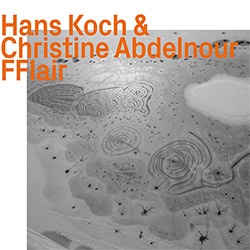



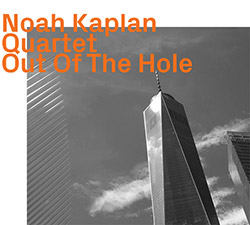
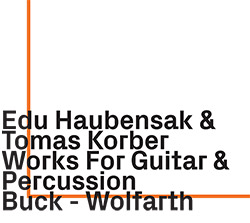


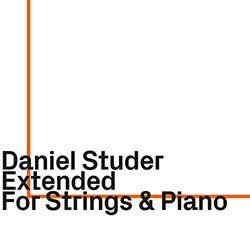
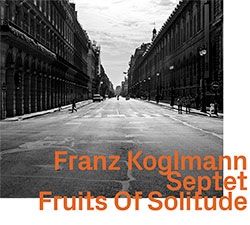


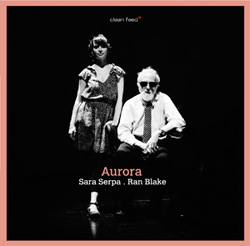


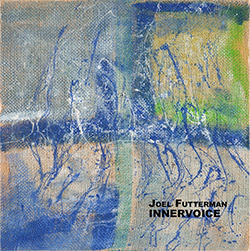

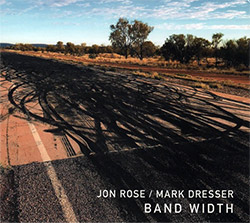









![Warren, Kenny (Warren / Hoffman / Ellman): Sweet World [VINYL]](https://www.teuthida.com/productImages/misc4/35451.jpg)












![Musicworks Magazine: #149 Fall 2024 [MAGAZINE + CD]](https://www.teuthida.com/productImages/misc4/35470.jpg)

![Nevai, Nandor: <<The PRICE of FRONTIER>> Book 1: FULK [BOOK + 4 CDs]](https://www.teuthida.com/productImages/misc4/35464.jpg)
![Nevai, Nandor: <<The PRICE of FRONTIER>> Book 2: MARTIAL [BOOK + 4 CDs]](https://www.teuthida.com/productImages/misc4/35465.jpg)
![Nevai, Nandor: <<The PRICE of FRONTIER>> Book 3: JASSOM [BOOK + 4 CDs]](https://www.teuthida.com/productImages/misc4/35466.jpg)
![Nevai, Nandor: <<The PRICE of FRONTIER>> Book 4: HARD-WON [BOOK + 4 CDs]](https://www.teuthida.com/productImages/misc4/35467.jpg)
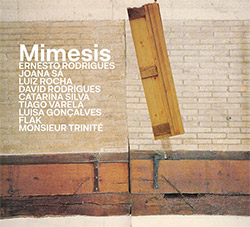

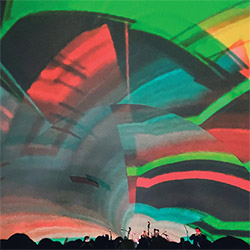
![Mazurek, Rob & Exploding Star Orchestra: Live at Adler Planetarium [VINYL]](https://www.teuthida.com/productImages/misc4/35233.jpg)
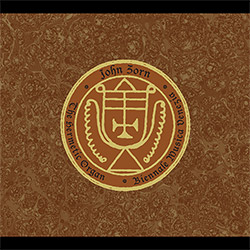
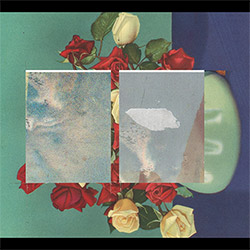
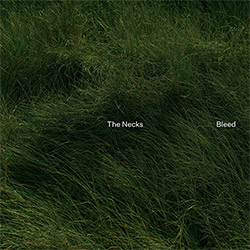
![Necks, The: Bleed [VINYL BLACK]](https://www.teuthida.com/productImages/misc4/35250.jpg)
![Necks, The: Bleed [VINYL GREEN + DOWNLOAD]](https://www.teuthida.com/productImages/misc4/35251.jpg)
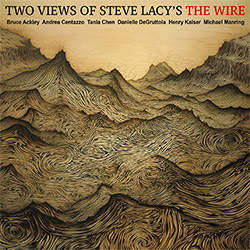

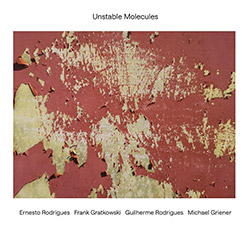

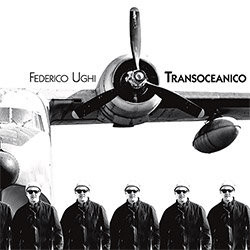
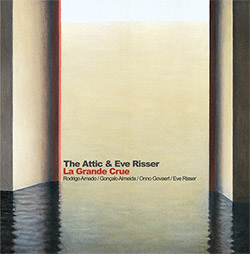



![DNS: Taking Big Bites Of The Khandas Three Cafes Deep [2 CDs]](https://www.teuthida.com/productImages/misc4/35334.jpg)




![Cleaver, Gerald: The Process [VINYL]](https://www.teuthida.com/productImages/misc4/34966.jpg)




![Alva Noto: HYbr:ID II [VINYL 2 LPs]](https://www.teuthida.com/productImages/misc4/35201.jpg)

![Baron, Derek / Luke Martin: Distinct and Concealed [CASSETTE + DOWNLOAD]](https://www.teuthida.com/productImages/misc4/35079.jpg)

![Lyle, Erica Dawn : Colonial Motels [CASSETTE + DOWNLOAD]](https://www.teuthida.com/productImages/misc4/35080.jpg)







![Alva Noto: HYbr:ID III [VINYL 2 LPs]](https://www.teuthida.com/productImages/misc4/35011.jpg)
![Kubisch, Christina / Trondheim Voices: Stromsanger 2022 For Six Voices And Electromagnetic Waves [VINYL]](https://www.teuthida.com/productImages/misc4/34628.jpg)
![Ristic, Manja / Joana Guerra / Veronica Cerrotta: Slani pejzazi [CASSETTE + DOWNLOAD]](https://www.teuthida.com/productImages/misc4/34928.jpg)
![Euro Herc: Segnali [CASSETTE + DOWNLOAD]](https://www.teuthida.com/productImages/misc4/34929.jpg)






![Zurria, Manuel: Fame di Vento [3 CDs]](https://www.teuthida.com/productImages/misc4/35167.jpg)

![Granberg, Magnus / Nattens Inbrott / Skogen: Holde Traume, Kehret Wieder! [2 CDs]](https://www.teuthida.com/productImages/misc4/35038.jpg)
![Frey, Jurg: Outermost Melodie [2 CDs]](https://www.teuthida.com/productImages/misc4/35039.jpg)

![Pavone, Jessica: Reverse Bloom [VINYL]](https://www.teuthida.com/productImages/misc4/34895.jpg)




![Modney (Modney / Wooley / Gentile / Roberts / Pluta / Symthe / ...): Ascending Primes [2 CDs]](https://www.teuthida.com/productImages/misc4/34852.jpg)






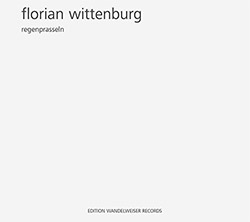

![Kirschner, Kenneth / Joseph Branciforte: From the Machine: Volume 1 [VINYL]](https://www.teuthida.com/productImages/misc4/30767.jpg)

![Elephant9 with Terje Rypdal: Catching Fire [VINYL 2 LPs]](https://www.teuthida.com/productImages/misc4/35355.jpg)
![Deerlady (Obomsawin, Mali / Magdalena Abrego): Greatest Hits [VINYL]](https://www.teuthida.com/productImages/misc4/34876.jpg)




![Haino, Keiji: Black Blues [2 CDs]](https://www.teuthida.com/productImages/misc4/35109.jpg)



![Surplus 1980: Illusion of Consistency [CD]](https://www.teuthida.com/productImages/misc4/35069.jpg)
![Staiano, Moe: Away Towards the Light [VINYL + DOWNLOAD]](https://www.teuthida.com/productImages/misc4/35037.jpg)
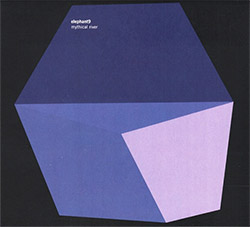



![Caveira (Gomes / Sousa / Abras / Ferrandini): Ficar Vivo [VINYL]](https://www.teuthida.com/productImages/misc4/34643.jpg)
![Gregg, J. J. / David Van Auken: Lunar Prairie [CD w/ DOWNLOAD]](https://www.teuthida.com/productImages/misc4/34611.jpg)

![Coultrain: Mundus [VINYL]](https://www.teuthida.com/productImages/misc4/32439.jpg)
![Mattin: Songbook #6 [VINYL]](https://www.teuthida.com/productImages/misc4/27317.jpg)
![Punkappella: Wake Up [7-inch VINYL]](https://www.teuthida.com/productImages/misc4/17519.jpg)
![Residents, The: WARNING: UNiNC.: Live And Experimental Recordings 1971-1972 [VINYL 2 LPs]](https://www.teuthida.com/productImages/misc4/31521.jpg)
![Coultrain: Phantasmagoria [VINYL]](https://www.teuthida.com/productImages/misc4/30142.jpg)
![Lennon, Sean Ono: Asterisms [VINYL]](https://www.teuthida.com/productImages/misc4/34517.jpg)

![Rotem Geffen: The Night Is The Night [VINYL]](https://www.teuthida.com/productImages/misc4/34631.jpg)
![Coley, Byron: Dating Tips for Touring Bands [VINYL]](https://www.teuthida.com/productImages/misc4/17906.jpg)

![Lost Kisses: My Life is Sad & Funny [DVD]](https://www.teuthida.com/productImages/misc4/lostKissesDVD.jpg)